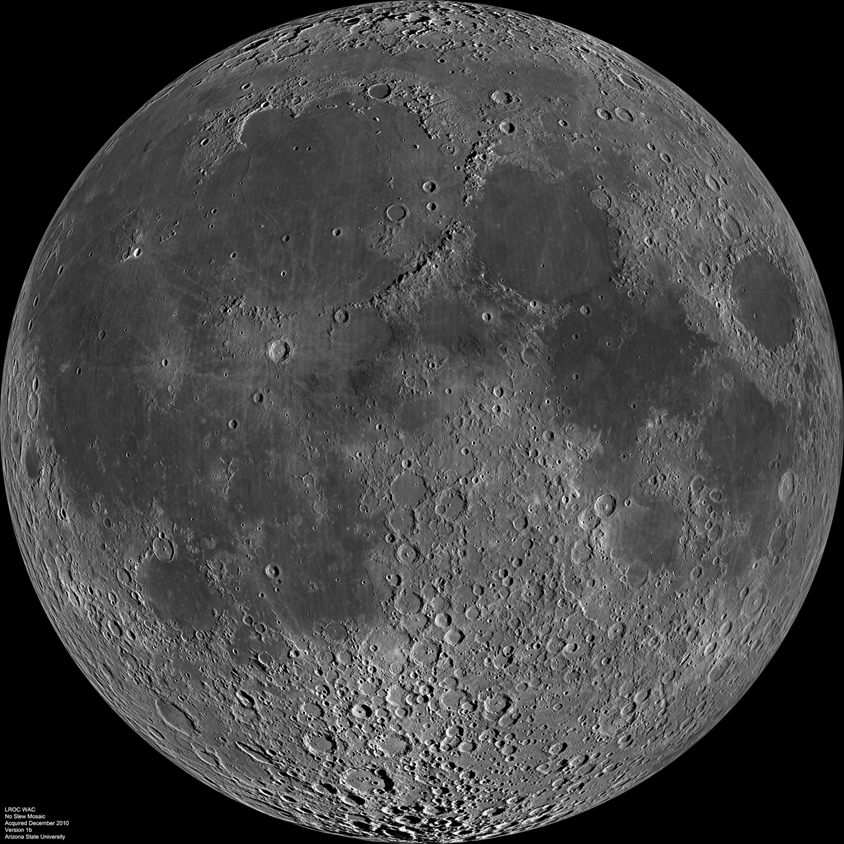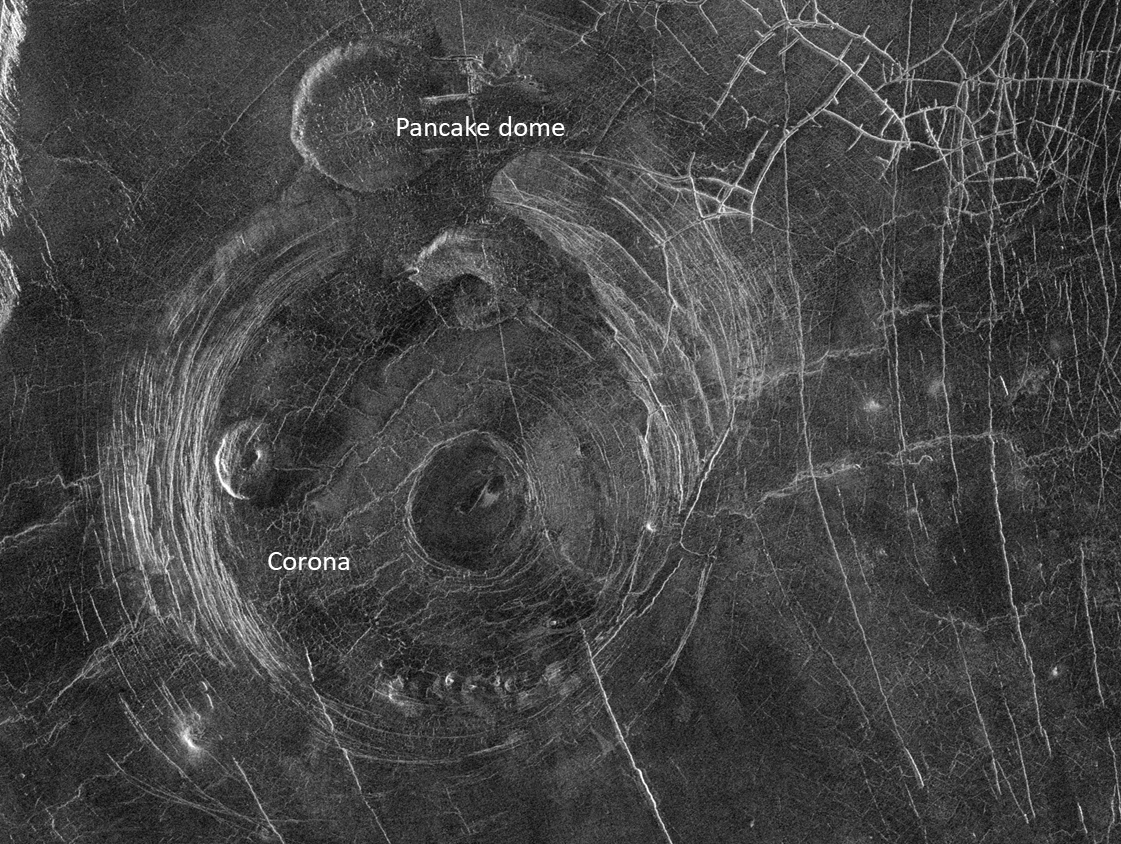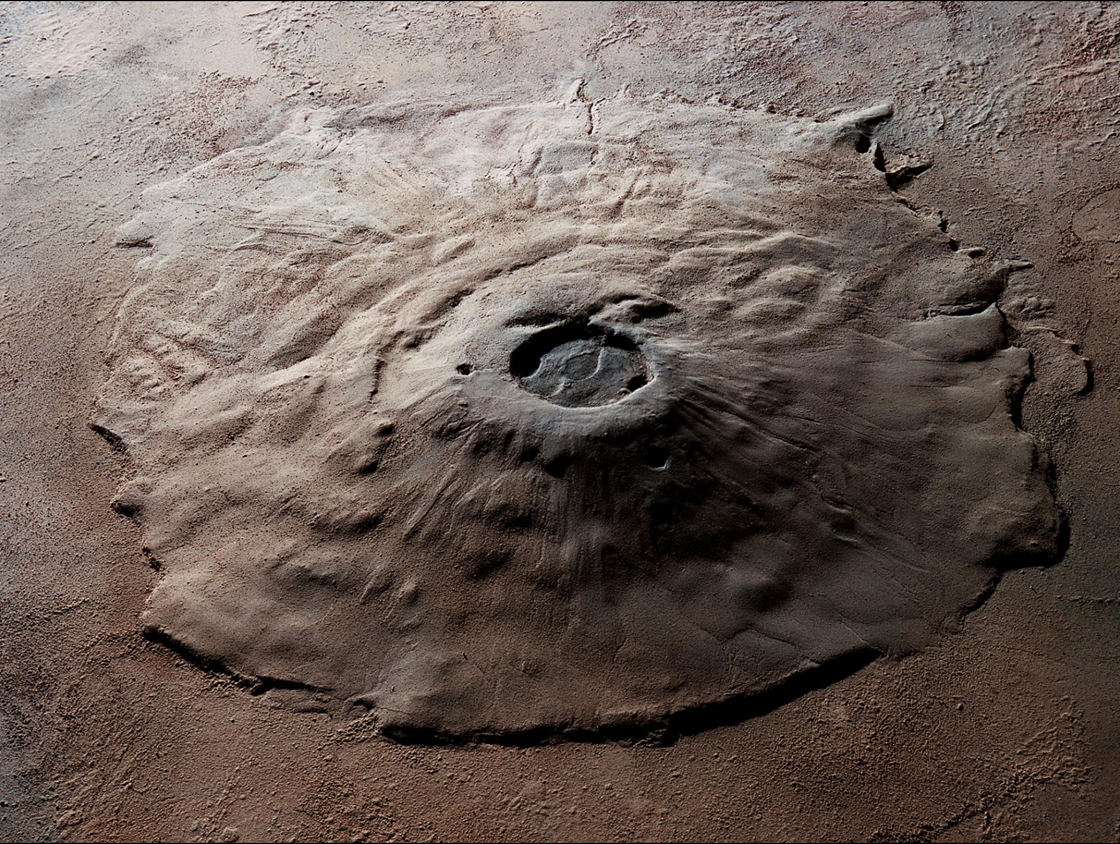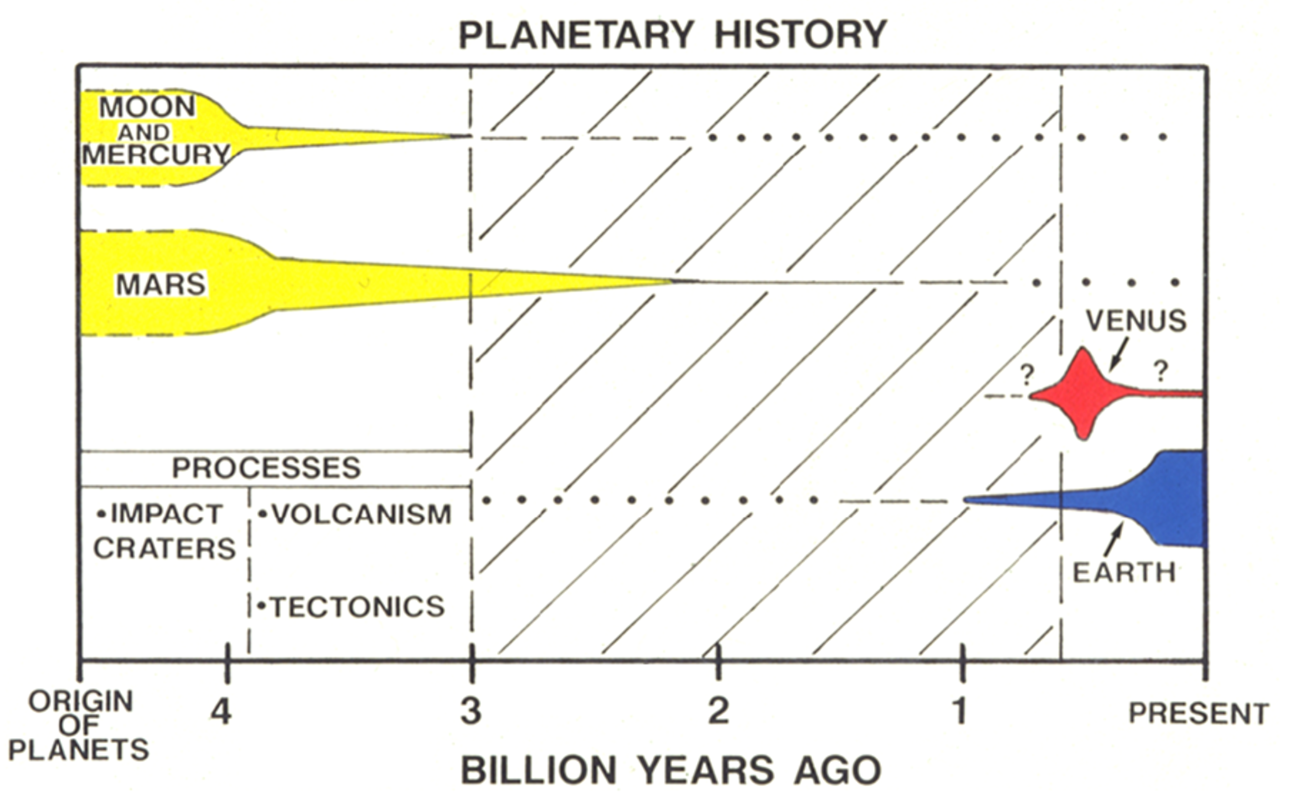PX282 - J6 - surfaces
moon

image: NASA, lunar orbiter 4
- heavily cratered, implying an ancient surface
- less cratered regions, mare* (lit. seas) are giant impact basins filled with lava flows until
Gyr ago - this was measured with radioisotope dating* of rock samples
- this allows the calibration of cratering history across the solar system
- impacts also trace thickness of lunar lithosphere with time
- lava flows are traced by rilles*
- the lunar surface is covered with soil called regolith*, which is a fine powder from many impacts
- rock samples returned by apollo and other missions, also lunar martian meteorites, can be dated with radioisotope dating
- the abundance of a isotope A, eg: uranium-235, is:
where,
- decay to a daughter product, eg: lead-207:
- in special cases,
can be assumed, eg: lead in zircon crystals, so is the only unknown - otherwise, it can be calibrated using a different isotope of the same element, B', for which abundance is constant in time
- B' is still unknown, but it can be assumed that that ratio is constant for different crystals within a single rock sample because of similar chemical properties of B and B'
- the exponential term becomes the gradient of a graph of
vs measured for multiple crystals in a single rock sample
mercury

image: NASA, Messenger
- mercury cratering implies ancient surface
Gyr
venus

image: NASA, magellan
- only large craters(> 3 km) as smaller bodies form up in the atmosphere
- cratering rate of the entire planet resurfaced
Gyr ago - there are thousands of volcanoes, but no sign of plate tectonics
- the lithosphere is too thin to support large volcanoes
- there are pancake domes and coronae, which is when volcanoes collapse under their own weights
- evidence for ancient water erosion (rivers, shorelines, river deltas, superimposed on more recent impact craters)

image: NASA, Magellan
earth
- few impact craters
- surface
Myr old - rocks found are up to
Gyr old
mars
- resurfacing until
Gyr ago - the largest volcanoes because the plates do not move across the mantle plumes (hot spots, eg; hawaii and canary islands)

image: NASA, CORBIS

image: taylor, 2018